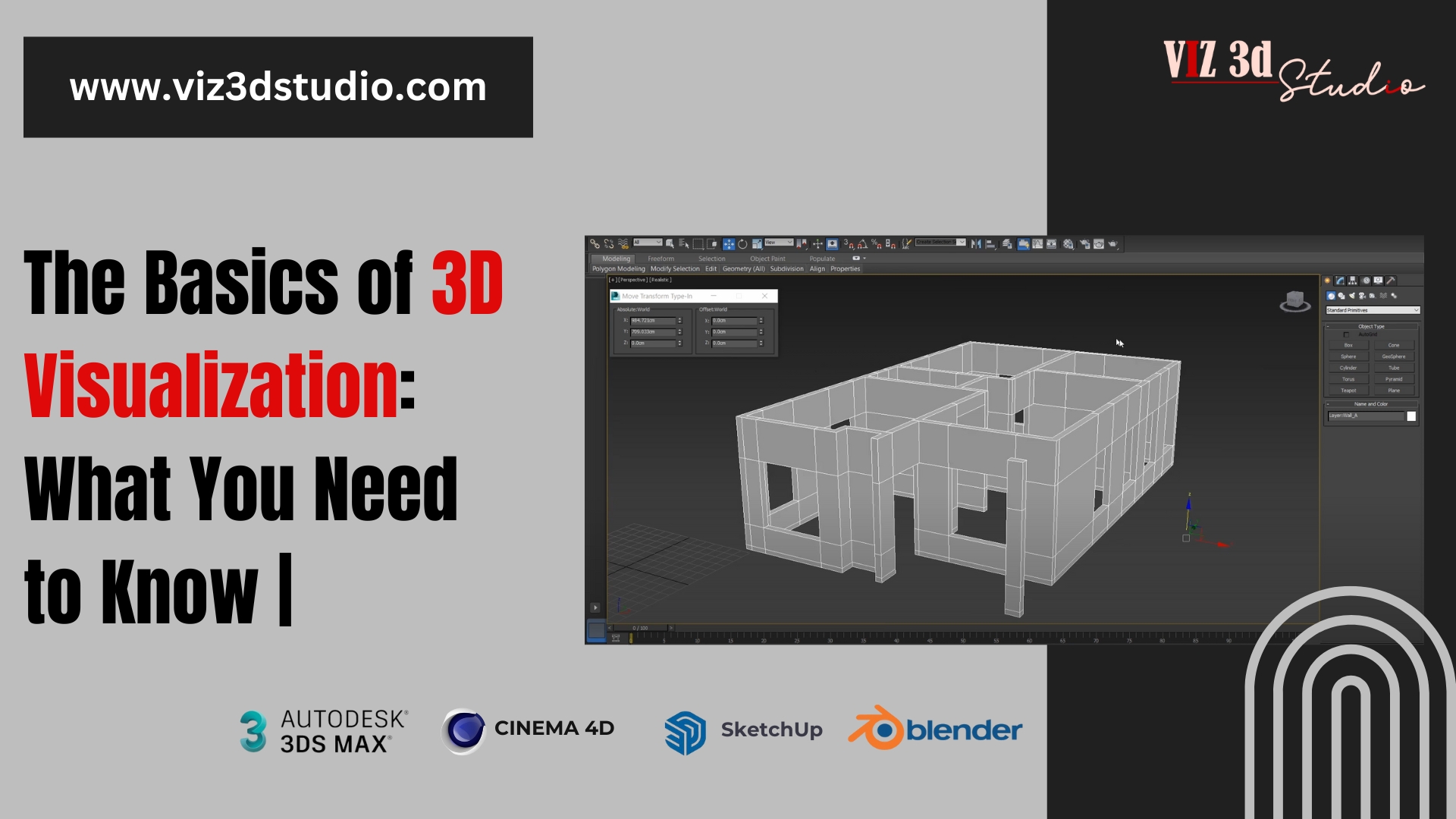In today’s digital age, 3D visualization has become an essential tool across various industries, from architecture and interior design to gaming and virtual reality. Understanding the basics of 3D visualization can open new avenues for creativity, efficiency, and innovation. This blog will cover the key points you need to know to get started with 3D visualization.
What is 3D Visualization?
3D visualization is the process of creating three-dimensional images or animations to communicate a concept or product idea. It involves the use of specialized software to transform 2D drawings or conceptual sketches into lifelike 3D models. These models can be manipulated, rendered, and animated to provide a comprehensive view of the object or scene from multiple angles.
Why is 3D Visualization Important?
3D visualization offers several benefits:
- Enhanced Communication: It helps in conveying complex ideas more clearly and effectively than 2D drawings, making it invaluable in fields like architecture and design.
- Better Accuracy: It allows for precise measurements and detailed representations, reducing errors and misinterpretations.
- Increased Efficiency: It streamlines the design and approval process, saving time and resources.
- Creative Freedom: It provides endless possibilities for customization and experimentation, fostering innovation.
Key Components of 3D Visualization
- Modeling
Modeling is the foundation of 3D visualization. It involves creating a digital 3D representation of an object or scene. There are two main types of modeling techniques:
- Polygonal Modeling: Uses polygons to create the surface of the object. It is commonly used for creating detailed and complex models like characters in a video game.
- NURBS Modeling: Uses curves to define the object’s surface, ideal for creating smooth and organic shapes.
- Texturing
Texturing adds color, patterns, and surface details to a 3D model, making it look more lifelike. Textures can simulate materials like wood, metal, fabric, and more. They are applied using maps such as diffuse maps (color), bump maps (surface detail), and specular maps (shininess).
- Lighting
Lighting is crucial for setting the mood and enhancing the realism of a 3D scene. It involves placing and adjusting light sources to simulate natural or artificial light. Common types of light include point lights, spotlights, and directional lights.
- Rendering
Rendering is the process of converting the 3D model into a 2D image or animation with the help of software. It involves calculating lighting, shading, and textures to produce the final visual output. Rendering can be real-time (interactive applications) or pre-rendered (still images and animations).
Popular 3D Visualization Software
Several software options are available for 3D visualization, each with its own strengths. Some of the most popular ones include:
- Autodesk 3ds Max: Known for its powerful modeling tools and versatility.
- Blender: An open-source software that offers a comprehensive suite of modeling, texturing, and rendering tools.
- SketchUp: User-friendly and ideal for architectural visualization.
- Cinema 4D: Favored by motion graphics artists for its intuitive interface and powerful animation tools.
Getting Started
To get started with 3D visualization, follow these steps:
- Learn the Basics: Familiarize yourself with core concepts and terminology.
- Choose a Software: Select a 3D software that suits your needs and budget.
- Practice Modeling: Start with basic shapes and gradually move to more complex models.
- Study Texturing and Lighting: Experiment with different materials and lighting setups.
- Render Your Projects: Use the rendering tools to create final images and animations.
Conclusion
3D visualization is a powerful skill that can enhance your ability to communicate ideas and bring your creative visions to life. By understanding the key components and practicing regularly, you can master this technology and unlock new possibilities in 3D visualization studio your work and projects. Whether you’re an aspiring designer, architect, or game developer, mastering the basics of 3D visualization is a valuable investment in your future.




